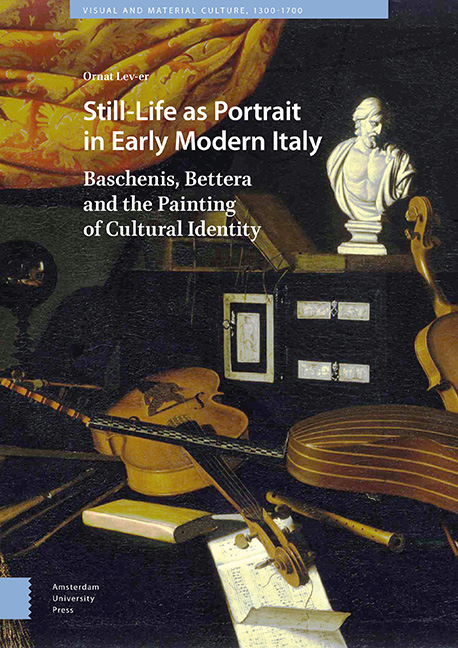 Still-Life as Portrait in Early Modern Italy
Still-Life as Portrait in Early Modern Italy Summary
This book ‘raises the curtain’ on the paintings of ‘still-life with musical instruments’ created by Evaristo Baschenis and Bartolomeo Bettera in seventeenth-century Bergamo. To date, scholars have regarded these paintings as the work of talented artists who excelled at the use of perspective and illusory techniques and at depictions of the vanitas motif through allusions to music and representations of dust on musical instruments, and who were appreciated above all for their technical virtuosity. This book has revealed two ‘scholarly painters’, cultivated individuals in possession of an interdisciplinary corpus of knowledge who invited their viewers to explore intriguing intellectual and cultural spheres – a remarkable achievement in the genre of still-life painting.
This study's main contribution is its innovative reading of the still-life genre, which reveals the unlimited profundity and complexity of this genre's messages and shows Bergamo to be a lively cultural centre rather than a peripheral city ensconced behind walls. The careful and exhaustive study of each composition and of the objects they contain has revealed a rich and intricate world filled with music, books, theatre, and debates concerning the paragone – the world of a cultivated individual in seventeenth-century northern Italy.
The chapter ‘Keeping Score: Painting Music’ opened with a discussion that underscores the importance of music in the life of upper-class Italians in the seventeenth century, and presented the positions of various theorists concerned with the arts of painting and music and with the similarities and differences between them. This chapter also described the wide-ranging musical activities in which aristocrats, patrons, and collectors characteristically participated during this time.
The musical instruments and sheet music in these paintings cannot be reduced to direct and simple representations. In Baschenis's works they represent the stylistic restraint and precision typical of his carefully balanced compositions; in Bettera's works, by contrast, they serve as a tool for disrupting the equilibrium in favour of Baroque disorder. Style, however, is only one of the means of representing a local and culturally specific experience of music in these paintings. A careful examination of individual compositions reveals that they each capture a different ‘story’.
- Type
- Chapter
- Information
- Still-Life as Portrait in Early Modern ItalyBaschenis, Bettera and the Painting of Cultural Identity, pp. 281 - 288Publisher: Amsterdam University PressPrint publication year: 2019


